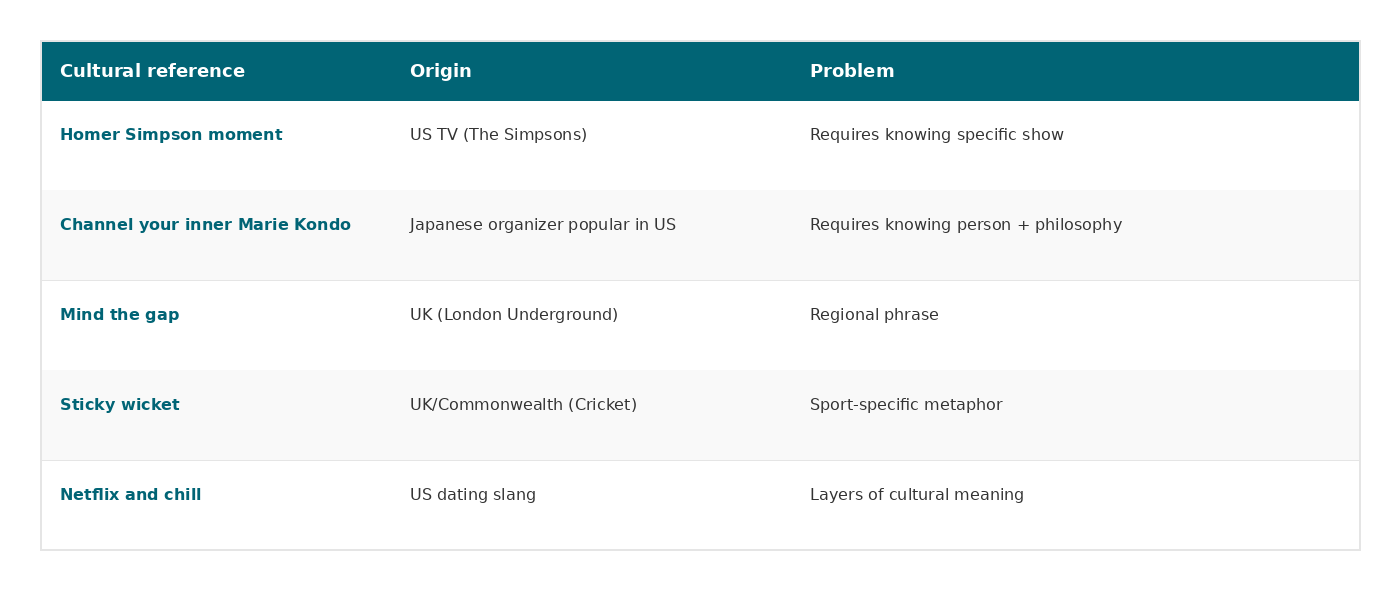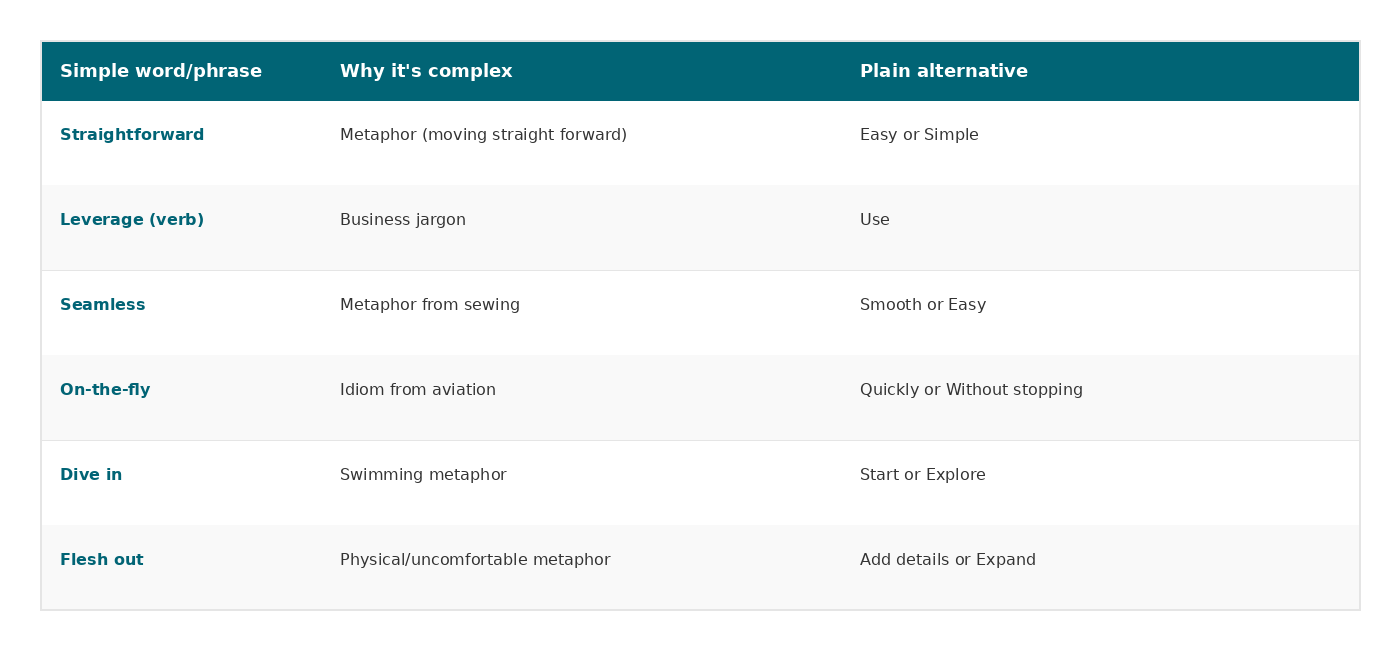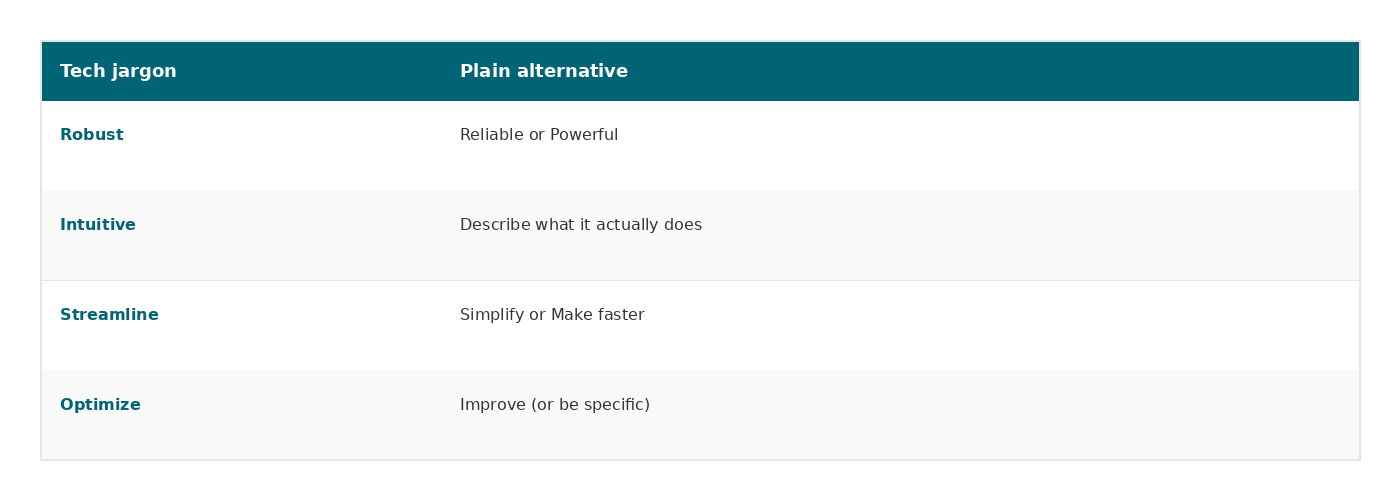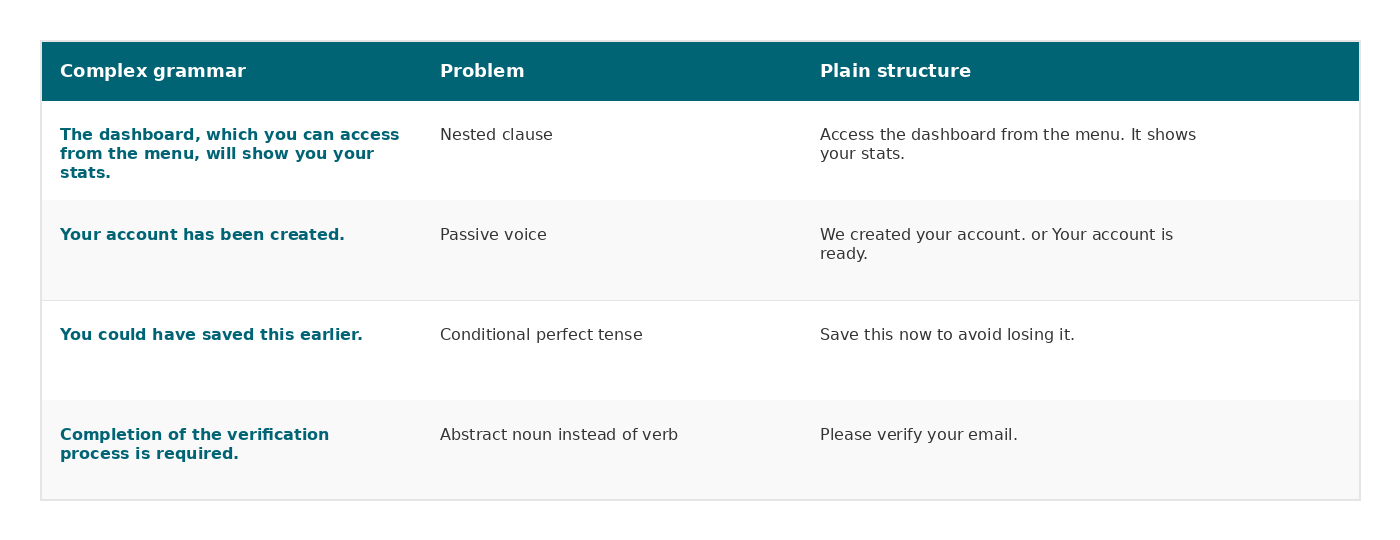What native English speakers get wrong about ‘simple’ language
Why your outsider perspective is actually your superpower
Over 75% of English speakers worldwide are non-native. When you write product copy, you’re writing primarily for people who learned English as a second, third, or fourth language.
Yet most UX content is still written by native English speakers who think they’re being “clear” when they’re actually creating cognitive friction for the majority of their users.
I know this because I stare at a button in a popular app that says “We’ll touch base soon.”
Touch... base?
I knew what it meant—I’d learned this phrase years ago. But for a moment, my brain tried to make sense of it literally. Touch what base? Baseball? A physical base? Then the translation kicked in: “We’ll contact you.”
That split-second pause? That’s cognitive friction.
Now imagine someone whose English is shakier than mine. Someone using a translator. Someone who’s never heard this phrase. They’re stuck trying to decode a baseball metaphor when they just want to know when they’ll hear back.
Here’s the thing: the native English speaker who wrote “touch base” probably thought they were being friendly and professional. They thought they were writing clearly. They were wrong.
Native English speakers have blind spots about what’s “simple” because their entire cultural context makes certain phrases feel obvious when they’re actually loaded with assumptions. As a native Hindi speaker working in English, I see these landmines everywhere.
Let me show you what you’re probably missing—and introduce you to the framework that fixes it.
Plain language isn’t “dumbing down”—it’s designing for clarity
Before we dig into specific problems, let’s name the solution: Plain Language.
This isn’t a nice-to-have. It’s a globally recognized communication standard used by governments, legal systems, and accessibility frameworks worldwide.
Plain Language principles:
Use common, everyday words
Write in active voice
Keep sentences short and clear
Eliminate jargon and idioms
Structure information logically
What it’s NOT:
Childish or patronizing
Less sophisticated
“Dumbing down” complex ideas
What it IS:
Accessible to the maximum number of people
Faster to read and comprehend
More inclusive across education levels, ages, and language backgrounds
The rest of this article breaks down the specific traps native English speakers fall into—and how to avoid them using Plain Language principles.
Resource: Plain language guide series
The idiom problem: cultural code disguised as “normal language”
What native speakers don’t realize: Idioms feel like “normal language” when they’re actually cultural code that doesn’t translate.
Examples that seem simple but aren’t:
These phrases feel conversational to native speakers. To everyone else, they’re puzzles to solve.
Why this matters in UX: When a user is trying to complete a task, cognitive load is already high. Every phrase that requires cultural translation adds friction. The user might figure it out, but they had to work to understand your “simple” copy.
The Fix: The Back-Translation Test
Actionable rule: Never use a phrasal verb or idiom when a single-word alternative exists.
Sign up → Register
Look into → Investigate, examine, inspect, check, consider
Hang tight → Wait
Ask yourself: “Would this phrase make sense if translated literally to another language—or explained to a child?” If no, rewrite it with a single, common word.
The cultural reference trap: not just American, but all native speakers
The assumption native speakers make: “Everyone knows this reference because we know this reference.”
This isn’t just an American problem. British idioms confuse Americans and Indians. Indian cultural references puzzle British users. The issue is assuming your cultural context is universal.
Examples from different English-speaking cultures:
The sports reference sub-problem: Tech companies love sports metaphors, but they’re culturally specific:
American: “Knock it out of the park,” “Monday morning quarterback,” “Hail Mary pass”
British/Commonwealth: “Not cricket,” “On a sticky wicket,” “Bowl them over”
These mean nothing to users outside those cultures.
Why this matters: Your product likely has users from dozens of countries. Cultural references create in-groups and out-groups. Some users feel included. Others feel alienated.
The Fix: The universality test
Actionable rule: If a reference requires knowledge of a specific person, place, show, sport, or cultural moment, eliminate it.
Alternative: Reference truly universal human experiences—weather, family, food, basic emotions.
The false simplicity of “obvious” vocabulary
Words native speakers think are simple but actually aren’t:
The technical jargon problem: Words that feel “normal” in tech but are actually jargon:
Why this matters: Every word that requires a dictionary lookup or internet search is a barrier. Users will push through, but they’ll be less confident. Less confidence = less engagement.
My test: If I translate this word literally to Hindi, does it still make sense? If my parents (who speak decent English but aren’t fluent) would pause at this word, it’s too complex.
The Fix: The common word rule
Actionable rule: Use the most common word that accurately describes the thing.
Prefer:
Words with Latin roots (they translate better across Romance languages)
Single verbs over phrasal verbs (“learn” vs. “find out”)
Concrete words over abstract nouns (”verify your email” vs. “completion of verification”)
The grammar complexity trap
Constructions native speakers love that create confusion:
The “clever” writing trap: Native speakers love linguistic playfulness:
Alliteration: “Perfectly private payments”
Puns: “Lettuce help you eat healthier” (food app)
Rhyming: “Meet, greet, and complete”
These might be memorable for native speakers. For non-native speakers, they’re confusing or simply don’t translate.
Why this matters: Complex grammar increases cognitive load even when individual words are simple. Users are trying to do something. Make comprehension effortless.
The Fix: The one-idea rule
Actionable rule: One idea per sentence. Subject-verb-object order.
Active voice whenever possible
Avoid clauses starting with “which,” “that,” “who”—break into two sentences instead
No linguistic cleverness in functional copy (save it for marketing, if anywhere)
Interactive exercise: Spot the problem
Here are 5 examples of copy that native English speakers think is “simple.” Can you spot what makes them difficult for non-native speakers?
1. We’ll get back to you ASAP.
2. Give your team a heads up before making changes.
3. Take a stab at the new feature.
4. The report gives you the lowdown on your metrics.
5. Don’t worry, we’ve got your back.
Before scrolling to solutions, identify:
What assumption does this make?
What might confuse a non-native speaker?
How would you rewrite it?
Exercise solutions + better alternatives
Every single one felt casual, friendly, and “simple” to whoever wrote them. All created unnecessary cognitive work for non-native speakers.
True simplicity doesn’t require an English degree or cultural immersion. It just works.
Remember: Your job isn’t to be clever—it’s to be clear
What’s next
Next week, we’ll dig into the three audiences framework—how to write for new users, returning users, and power users all at once without cluttering your interface.
We’ll apply what we learned today (Plain Language for all) with last week’s if-then-else logic to create copy that serves multiple user states simultaneously.
See you Friday.
— Mansi
Related reading:
Lost in translation? The challenges of non-native English-speaking UX Writers and their leads
Last month, I attended Button 2023, a Conference for UX writers and Content Designers—it was like finding my tribe! Amidst all the great discussions, one topic really stuck with me: the challenges faced by non-native English-speaking (NNES) UX professionals.
Found this useful? Here’s how to continue:
Send me examples - Spot idioms or cultural references in UI copy? DM me on Substack. I’ll feature the best ones (anonymized).
Share with your team - Forward this to native English speakers on your team. Help them see their blind spots.
Tell me your experience - Non-native speaker in UX? Native speaker who learned something new? Reply and let me know.
Support this work - If this changed your perspective, buy me a coffee/book.
UX Writing Bud delivers frameworks and systems for content designers every Friday. Free, always.









